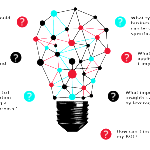Beyond Dashboards: Emerging Business Intelligence Trends
In today’s business landscape, intelligence on a company’s financials and operations is more important than ever. Unfortunately, many entrepreneurs only realize this once their business has grown beyond a certain point, and they are forced to acknowledge the significance of business intelligence for their success.
Businesses have become adept at leveraging data and BI tools to address specific, predictable questions, such as monitoring sales objectives or getting high-level views of order statuses across the enterprise. However, in today’s volatile and rapidly evolving business environment, BI reporting needs to be more swift and adaptable. Companies must go beyond traditional metrics to gain a sustainable competitive edge and strive for greater insight and agility.
In today’s fast-paced business environment, leaders must adopt a comprehensive data-driven approach to gain a competitive edge. Transformation fosters agile decision-making aligned with strategic business objectives, such as sales growth, innovation, cost reduction, and industry disruption.
Business intelligence involves using technology to analyze and present data for practical business decision-making in various contexts. Business intelligence is a valuable approach to ensure informed decision-making by managers, executives, and founders for business operations. It is ideal for identifying and pursuing new opportunities to expand the business, increase returns, and enhance profitability.
The aim is to simplify data interpretation and representation with a strategy for long-term business stability. Business intelligence tools allow for data collection from various sources for quick analysis and visualization. By employing this approach, companies can make informed decisions that enhance their chances of success.
The Data-Driven Reality
Gartner survey shows that many organizations rely on spreadsheets for analysis. And 87.5% of respondents described their data and analytics maturity as low. and have low data and analytics maturity (87.5%).
The challenge of becoming a data-driven company is evident in the findings of NewVantage Partners’ “Big Data and AI Executive Survey 2021.” The survey highlights that businesses struggle to define what it means to be data-driven and the efforts required to establish such a culture. The results reveal that just 48.5% of companies are using data to drive innovation, and a mere 41.2% are leveraging analytics to gain a competitive advantage. In terms of organizational transformation, less than a quarter of companies have successfully fostered a data culture (24.4%) or established a data-driven organization (24%).
Top Business Intelligence Trends
CEOs prioritize establishing a data-driven culture as they plan their growth strategies for the coming year. In 2023, more businesses are expected to embrace AI solutions to transform their analytics strategy, providing greater accessibility for more business stakeholders to take action in real-time.
As we move forward, there will be significant changes in how enterprises wish to receive business intelligence (BI), and the following are four noteworthy shifts to consider.
1. Augmented Analytics
Augmented analytics refers to using machine learning and natural language processing (NLP) to automate and enhance data analysis. With the help of augmented analytics, organizations can quickly uncover insights and patterns that would otherwise be missed.
Augmented analytics tools offer data-based recommendations and actions, simplifying organizations’ ability to act on insights. Augmented analytics saves time and effort by quickly analyzing large volumes of data and providing useful recommendations.
Automated data preparation, analysis, and visualization in augmented analytics can lead to quick insights that usually take weeks or months. Augmented analytics will become a standard BI feature as more organizations adopt AI-driven BI tools.
2. Natural Language Processing
Natural Language Processing (NLP) is another emerging trend in BI that will gain more momentum in 2023. NLP refers to the ability of machines to understand and interpret human language. With the help of NLP, users can interact with BI tools more naturally and intuitively, allowing them to ask questions and receive answers in plain language.
NLP-powered BI tools can also help organizations to democratize data by making it more accessible to non-technical users. With NLP, users can ask questions about data without knowing SQL or other programming languages. This helps bridge the gap between business users and IT, making it easier for everyone to make data-driven decisions.
3. Data Storytelling
Data storytelling is the practice of using data to tell a compelling narrative that helps to drive business decisions. In 2023, we expect more organizations to adopt data storytelling to communicate insights and findings to stakeholders. Data storytelling enhances data accessibility and engagement, helping stakeholders understand data implications and take action effectively.
With the help of data visualization tools, organizations can create compelling, informative, and engaging stories. However, by using charts, graphs, and other visual aids, organizations can help stakeholders understand complex data sets more intuitively. As data becomes increasingly essential to business decision-making, we expect more organizations to invest in data storytelling tools and techniques.
4. Collaborative BI
It refers to using BI tools to promote collaboration and knowledge sharing across teams. Collaborative BI tools enable teamwork for data analysis and sharing insights, leading to informed decision-making. Collaborative BI tools break down silos, encourage cross-functional collaboration and lead to more innovation and better outcomes.
BI tools can also help to democratize data by making it more accessible to non-technical users. Shared data analysis and visualization platform empowers users at all levels to contribute to data-driven decision-making. Remote work boosts the demand for collaborative BI tools to enhance teamwork, regardless of location, among organizations.
5. Predictive Analytics
Predictive analytics leverages data, statistical algorithms, and machine learning to forecast future outcomes based on historical data. In 2023, we expect more organizations to adopt predictive analytics to gain insights into future trends and behaviours.
Conclusion
Although all of these trends are revolutionary, we are still in the early stages of progress in this field. Therefore, the implementation of enhanced AI-driven BI requires careful planning and preparation. It is worth noting that AI-driven BI tools are meant to supplement critical roles in an organization. Instead, augmented AI empowers individuals to focus on high-level thinking and strategic work.
Thus, adopting AI-driven BI tools can enhance organizations’ ability to leverage data and expand their remote workforce, thriving in a dynamic business.
Allied Consultants offers advanced Business Intelligence services for businesses to optimize their data usage and achieve success. Our experts can help you gain a competitive edge with predictive analytics, machine learning, and more. Unlock your data’s potential. So if you’re ready to take your business intelligence strategy to the next level, we encourage you to get in touch with us today.







